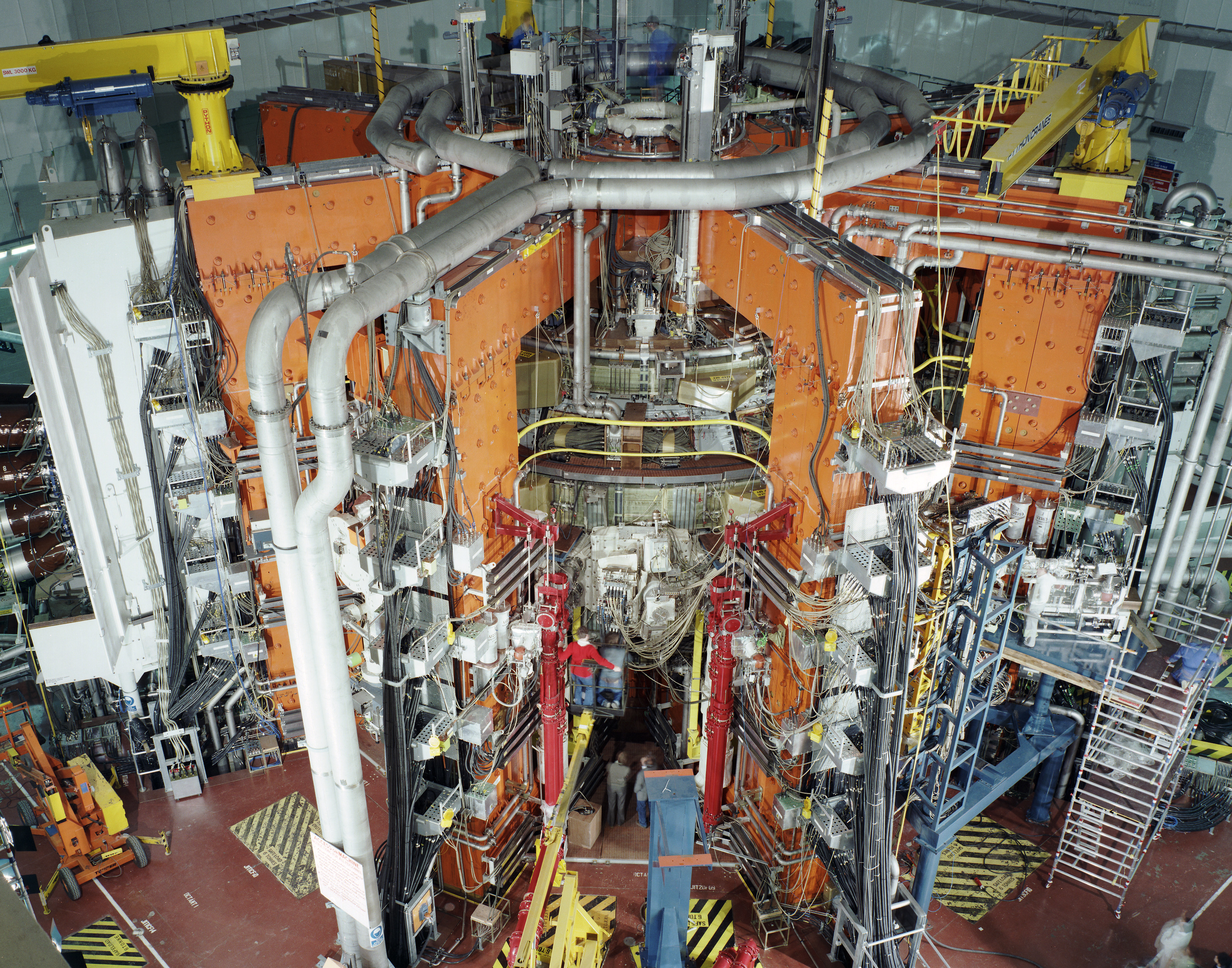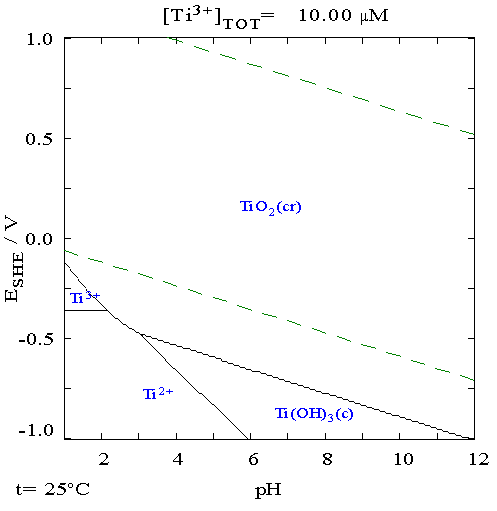|
Cluster Impact Fusion
Cluster Impact Fusion is a suggested method of producing practical fusion power using small clusters of heavy water molecules directly accelerated into a titanium-deuteride target. Calculations suggested that such a system enhanced the cross section by many orders of magnitude. It is a particular implementation of the larger beam-target fusion concept. The idea was first reported by researchers at Brookhaven in 1989. Intrigued by recent reports of cold fusion, they attempted to study potential causes for the effect by accelerating tiny droplets of heavy water, about 25 to 1300 D2O molecules each, into a target at about 220 eV. To their surprise they immediately saw fusion effects, at a rate that was many times what any of them could explain via conventional theory. The experiment was fairly simple in concept but required an appropriate accelerator, so it was some time before other labs were able to repeat the experiments. One of the first was the University of Washington, who re ... [...More Info...] [...Related Items...] OR: [Wikipedia] [Google] [Baidu] |
Fusion Power
Fusion power is a proposed form of power generation that would generate electricity by using heat from nuclear fusion reactions. In a fusion process, two lighter atomic nuclei combine to form a heavier nucleus, while releasing energy. Devices designed to harness this energy are known as fusion reactors. Research into fusion reactors began in the 1940s, but as of 2022, only one design, an inertial confinement laser-driven fusion machine at the US National Ignition Facility, has conclusively produced a positive fusion energy gain factor, i.e. more power output than input. Fusion processes require fuel and a confined environment with sufficient temperature, pressure, and confinement time to create a plasma in which fusion can occur. The combination of these figures that results in a power-producing system is known as the Lawson criterion. In stars, the most common fuel is hydrogen, and gravity provides extremely long confinement times that reach the conditions needed for fusion ... [...More Info...] [...Related Items...] OR: [Wikipedia] [Google] [Baidu] |
Titanium
Titanium is a chemical element with the Symbol (chemistry), symbol Ti and atomic number 22. Found in nature only as an oxide, it can be reduced to produce a lustrous transition metal with a silver color, low density, and high strength, resistant to corrosion in sea water, aqua regia, and chlorine. Titanium was discovered in Cornwall, Kingdom of Great Britain, Great Britain, by William Gregor in 1791 and was named by Martin Heinrich Klaproth after the Titan (mythology), Titans of Greek mythology. The element occurs within a number of minerals, principally rutile and ilmenite, which are widely distributed in the Earth's crust and lithosphere; it is found in almost all living things, as well as bodies of water, rocks, and soils. The metal is extracted from its principal mineral ores by the Kroll process, Kroll and Hunter process, Hunter processes. The most common compound, titanium dioxide, is a popular photocatalysis, photocatalyst and is used in the manufacture of white pigments ... [...More Info...] [...Related Items...] OR: [Wikipedia] [Google] [Baidu] |
Deuterium
Deuterium (or hydrogen-2, symbol or deuterium, also known as heavy hydrogen) is one of two Stable isotope ratio, stable isotopes of hydrogen (the other being Hydrogen atom, protium, or hydrogen-1). The atomic nucleus, nucleus of a deuterium atom, called a deuteron, contains one proton and one neutron, whereas the far more common protium has no neutrons in the nucleus. Deuterium has a natural abundance in Earth's oceans of about one atom of deuterium among all atoms of hydrogen (see heavy water). Thus deuterium accounts for approximately 0.0156% by number (0.0312% by mass) of all the naturally occurring hydrogen in the oceans, while protium accounts for more than 99.98%. The abundance of deuterium changes slightly from one kind of natural water to another (see Vienna Standard Mean Ocean Water). (Tritium is yet another hydrogen isotope, with two neutrons, that is far more rare and is radioactive.) The name ''deuterium'' is derived from the Greek , meaning "second", to denot ... [...More Info...] [...Related Items...] OR: [Wikipedia] [Google] [Baidu] |
Cross Section (physics)
In physics, the cross section is a measure of the probability that a specific process will take place when some kind of radiant excitation (e.g. a particle beam, sound wave, light, or an X-ray) intersects a localized phenomenon (e.g. a particle or density fluctuation). For example, the Rutherford scattering, Rutherford cross-section is a measure of probability that an alpha particle will be deflected by a given angle during an interaction with an atomic nucleus. Cross section is typically denoted (sigma) and is expressed in units of area, more specifically in barn (unit), barns. In a way, it can be thought of as the size of the object that the excitation must hit in order for the process to occur, but more exactly, it is a parameter of a stochastic process. In classical physics, this probability often converges to a deterministic proportion of excitation energy involved in the process, so that, for example, with light scattering off of a particle, the cross section specifies the ... [...More Info...] [...Related Items...] OR: [Wikipedia] [Google] [Baidu] |
Beam-target Fusion
Colliding beam fusion (CBF), or colliding beam fusion reactor (CBFR), is a class of fusion power concepts that are based on two or more intersecting beams of fusion fuel ions that are independently accelerated to fusion energies using a variety of particle accelerator designs or other means. One of the beams may be replaced by a static target, in which case the approach is termed ''accelerator based fusion'' or ''beam-target fusion'', but the physics is the same as colliding beams. CBFRs face several problems that have limited their ability to be seriously considered as candidates for fusion power. When two ions collide, they are more likely to scatter than to fuse. Magnetic confinement fusion reactors overcome this problem using a bulk plasma and confining it for some time so that the ions have many thousands of chances to collide. Two beams colliding give ions little time to interact before the beams fly apart. This limits how much fusion power a beam-beam machine can make. CBF ... [...More Info...] [...Related Items...] OR: [Wikipedia] [Google] [Baidu] |
Brookhaven National Laboratory
Brookhaven National Laboratory (BNL) is a United States Department of Energy national laboratory located in Upton, Long Island, and was formally established in 1947 at the site of Camp Upton, a former U.S. Army base and Japanese internment camp. Its name stems from its location within the Town of Brookhaven, approximately 60 miles east of New York City. It is managed by Stony Brook University and Battelle Memorial Institute. Research at BNL includes nuclear and high energy physics, energy science and technology, environmental and bioscience, nanoscience, and national security. The 5,300 acre campus contains several large research facilities, including the Relativistic Heavy Ion Collider and National Synchrotron Light Source II. Seven Nobel Prizes have been awarded for work conducted at Brookhaven Lab. Overview BNL is staffed by approximately 2,750 scientists, engineers, technicians, and support personnel, and hosts 4,000 guest investigators every year. The laboratory has ... [...More Info...] [...Related Items...] OR: [Wikipedia] [Google] [Baidu] |
Cold Fusion
Cold fusion is a hypothesized type of nuclear reaction that would occur at, or near, room temperature. It would contrast starkly with the "hot" fusion that is known to take place naturally within stars and artificially in hydrogen bombs and prototype fusion reactors under immense pressure and at temperatures of millions of degrees, and be distinguished from muon-catalyzed fusion. There is currently no accepted theoretical model that would allow cold fusion to occur. In 1989, two electrochemists, Martin Fleischmann and Stanley Pons, reported that their apparatus had produced anomalous heat ("excess heat") of a magnitude they asserted would defy explanation except in terms of nuclear processes. They further reported measuring small amounts of nuclear reaction byproducts, including neutrons and tritium. ("It is inconceivable that this mount of heatcould be due to anything but nuclear processes... We realise that the results reported here raise more questions than they provid ... [...More Info...] [...Related Items...] OR: [Wikipedia] [Google] [Baidu] |
University Of Washington
The University of Washington (UW, simply Washington, or informally U-Dub) is a public research university in Seattle, Washington. Founded in 1861, Washington is one of the oldest universities on the West Coast; it was established in Seattle approximately a decade after the city's founding. The university has a 703 acre main campus located in the city's University District, as well as campuses in Tacoma and Bothell. Overall, UW encompasses over 500 buildings and over 20 million gross square footage of space, including one of the largest library systems in the world with more than 26 university libraries, art centers, museums, laboratories, lecture halls, and stadiums. The university offers degrees through 140 departments, and functions on a quarter system. Washington is the flagship institution of the six public universities in Washington state. It is known for its medical, engineering, and scientific research. Washington is a member of the Association of American Univ ... [...More Info...] [...Related Items...] OR: [Wikipedia] [Google] [Baidu] |
Impact Fusion
Impact may refer to: * Impact (mechanics), a high force or shock (mechanics) over a short time period * Impact, Texas, a town in Taylor County, Texas, US Science and technology * Impact crater, a meteor crater caused by an impact event * Impact event, the collision of a meteoroid, asteroid or comet with Earth * Impact factor, a measure of the citations to a science or social science journal Books and magazines * ''Impact'' (novel), a 2010 novel by Douglas Preston *''Impact Press'', a former Orlando, Florida-based magazine * Impact Magazines, a former UK magazine publisher * ''Impact'' (conservative magazine), a British political magazine * ''Impact'' (British magazine), a British action film magazine * ''Impact'', a French action film magazine spun off from ''Mad Movies'' * ''Impact'' (UNESCO magazine), a former UNESCO quarterly titled ''IMPACT of science on society'' * ''Impact'' (student magazine), a student magazine for the University of Nottingham, England * '' Bathim ... [...More Info...] [...Related Items...] OR: [Wikipedia] [Google] [Baidu] |
Macron (physics)
In physics, macrons are microscopic (dust-sized) particles, accelerated to high speeds. The term was first used in the late 1960s, when it was believed that macrons could be accelerated cheaply in small particle accelerators as a way of achieving low-cost fusion power Fusion power is a proposed form of power generation that would generate electricity by using heat from nuclear fusion reactions. In a fusion process, two lighter atomic nuclei combine to form a heavier nucleus, while releasing energy. Devices d .... References Fusion power {{nuclear-stub ... [...More Info...] [...Related Items...] OR: [Wikipedia] [Google] [Baidu] |
Nuclear Technology
Nuclear technology is technology that involves the nuclear reactions of atomic nuclei. Among the notable nuclear technologies are nuclear reactors, nuclear medicine and nuclear weapons. It is also used, among other things, in smoke detectors and gun sights. History and scientific background Discovery The vast majority of common, natural phenomena on Earth only involve gravity and electromagnetism, and not nuclear reactions. This is because atomic nuclei are generally kept apart because they contain positive electrical charges and therefore repel each other. In 1896, Henri Becquerel was investigating phosphorescence in uranium salts when he discovered a new phenomenon which came to be called radioactivity. He, Pierre Curie and Marie Curie began investigating the phenomenon. In the process, they isolated the element radium, which is highly radioactive. They discovered that radioactive materials produce intense, penetrating rays of three distinct sorts, which they labeled ... [...More Info...] [...Related Items...] OR: [Wikipedia] [Google] [Baidu] |





